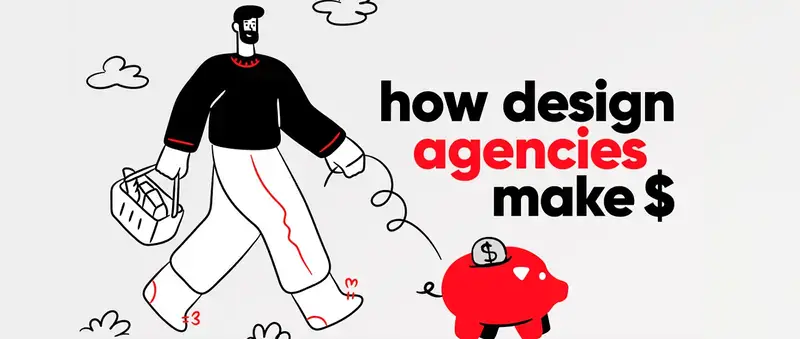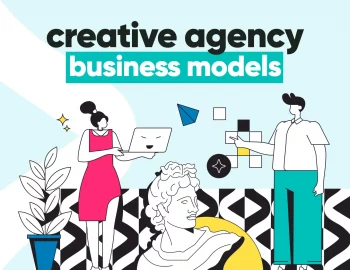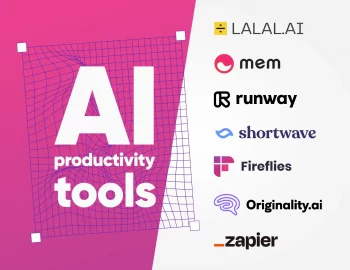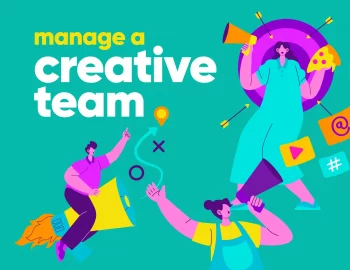You ever feel like managing all projects and tasks is just like juggling way too many balls in the air? Yeah, it can be a lot. But here’s the good news: integrating AI tools can actually make this project management chaos manageable. Not in a sci-fi “robots take over” way, but in a “finally, something that handles the boring stuff” way.
Imagine having a behind-the-scenes assistant who schedules, predicts potential risks, and even drafts your meeting notes (without complaining). Sounds dreamy, right? But it can happen, so let’s talk about how to make AI your secret weapon for smoother project management without making your team want to throw their laptops out the window.
Steps to smoothly integrate AI in your project management workflow
… according to Statista survey (2023), integrating AI tools leads to an average of 6% to 10% revenue increase for businesses?
AI tools are only as good as how you implement them. A messy, all-in introduction can overwhelm your team, while a thoughtful approach makes adoption seamless. Here’s how to bring AI into your workflow without headaches.
1. Assess your current workflow
Before adding any AI technologies, identify bottlenecks and repetitive tasks that slow your team down. Map out where automation, data insights, or predictive tools could make the biggest impact, ensuring AI solves real problems and not just adds complexity.
2. Choose the right tools
Not every AI tool fits every team. Look for ones that integrate with your existing platforms (be it Asana, ClickUp, Slack, whatever you’re using) and align with your needs – whether that’s automating routine tasks, risk prediction, or smarter scheduling.
3. Ensure the quality and security of your data
AI relies on data, so prepare yours carefully before the transition and make sure it’s accurate, well-organized, and secure. Clean up outdated info, establish clear data quality and management policies, and ensure compliance with privacy regulations before introducing AI-driven automation.
4. Provide adequate training
AI is only useful if your team knows how to use it – you can offer hands-on training, create easy-to-follow guides, and encourage experimentation, for example. The more confident your team feels, the smoother the integration will be.
5. Encourage collaboration
AI systems should enhance teamwork, not replace it, so get input from designers, developers, and strategists to ensure AI aligns with their workflows. The more involved they are, the more likely they’ll embrace it.
6. Pilot AI in small-scale projects first
It’s better to start small first and test AI on a single workflow or project before rolling it out agency-wide. This will help you minimize risk and refine the process while building trust with your team.
7. Monitor performance & adjust
Integrating AI project management tools isn’t a set-it-and-forget-it solution, you must also track how they impact efficiency, quality, and team satisfaction. Gather feedback, tweak settings, and then refine processes to maximize the benefits over time.

Where to integrate AI in project management to benefit from it the most
AI isn’t just a fancy add-on – it’s a game-changer when applied in the right areas. You just have to use it where it actually makes a difference, not just for the sake of “innovation.” Here’s where it can make the biggest impact of taking the weight off your shoulders.
… almost half of businesses spend up to 20% of their tech budget on AI (acc to a Hostinger Survey, 2025), and one-fifth of all industries use AI across service operations and corporate finance(acc to Statista, 2023).
1. Project planning and scheduling
AI tools analyze past projects, team availability, and deadlines to create realistic, optimized schedules. They can even adjust timelines dynamically when things shift, helping you avoid last-minute scrambles and keep everyone on track without the guesswork.
2. Resource allocation
Incorporating AI helps distribute workloads intelligently by analyzing team capacity, availability, skill sets, and project demands. Instead of overloading key players, AI optimizes resource allocation, ensuring tasks are assigned efficiently, balancing productivity and avoiding burnout.
3. Risk management
By analyzing past projects, budget trends, and task dependencies, AI algorithms define project risks and flag potential issues (missed deadlines, resource shortages, scope creep) before they escalate, so you can fix problems before they happen. It’s like having a crystal ball, but way more data-driven.
4. Project management and monitoring / Project monitoring & tracking
AI solutions track project progress in real-time, flag delays, and even suggest fixes when things start slipping. Instead of digging through reports, you get instant updates on whether you’re ahead, behind, or cruising smoothly toward your deadlines.
5. Decision-making support
AI tools change the game of making the right call by analyzing massive amounts of data and providing insights (patterns, risks, and opportunities) based on past performance, team efficiency, and project trends. Whether it’s prioritizing tasks or predicting client satisfaction, AI gives you the hard facts to back up your decisions.
6. Task automation
Implementing AI in your workflow can help handle repetitive tasks (such as status updates, scheduling, and report generation), so your team can focus on creative and strategic work instead of drowning in admin. Less busywork, more impact.
… existing AI technologies can save 60% to 70% of workers’ time today simply by automating tasks? (acc to McKinsley survey from 2023)
7. Predictive analytics
AI analyzes patterns from past projects to forecast project outcomes and deadlines, budget overruns, and potential roadblocks. These AI-generated insights let you stay ahead of issues instead of reacting to them at the last minute.
8. Team collaboration
AI-powered software improves teamwork by automating meeting summaries, organizing conversations, and ensuring no tasks are left undone. It keeps everyone aligned but without the constant back-and-forth.
9. Client communication & relationship management
AI implementation streamlines client updates with AI-powered chatbots, automated reports, and smart email responses. Thus, it helps you stay proactive, address concerns early, manage client expectations, improve interactions, and strengthen client trust effortlessly.
10. Data analysis and insights
AI can go through and analyze historical project data to identify trends, inefficiencies, and opportunities, turning raw numbers into actionable insights and thus offering a clear roadmap for continuous improvement.
11. Cost estimation
AI tools can analyze past project budgets, market trends, and project scope so they can generate more accurate cost estimations. Thus, it helps reduce budget overruns and financial uncertainties.
12. Natural Language Processing (NLP)
NLP-driven AI tools can summarize emails, generate reports, and even draft responses, extracting valuable insights, streamlining communication, and also ensuring no critical details get lost in long messages.
13. Scalability
AI helps scale processes as your agency grows, managing great volumes of data and helping you handle complex tasks or multiple projects simultaneously while ensuring that workflows remain efficient without overburdening project managers.
14. Quality Control
AI technologies can detect inconsistencies, errors, and potential issues in deliverables (spotting code errors, for example) before they reach clients, enhancing quality assurance by providing real-time feedback and automated checks.
What types of AI project management tools can you use?
AI comes in different flavors, each designed to solve specific challenges to improve project management. Whether you need a brainstorming buddy, a time-tracking genius, or a way to gauge team morale, there’s an AI tool for that. Here are some suggestions:
… by the end of 2023, over 80% of Fortune 500 companies had integrated ChatGPT within their business (OpenAI), and 46% of American companies have saved between $25,000 and $70,000 solely from using it (acc to Statista)
• Generative AI assistant
Think of this as your virtual brainstorming partner. Generative AI tools can draft emails, generate reports, summarize meetings, and even suggest creative ideas. In short, they take care of tedious writing tasks so you can focus on strategy and execution.
Tools to try: ChatGPT, Jasper, Notion AI
• AI-Powered time tracking & productivity analysis
AI analyzes work patterns, detects inefficiencies, and helps optimize task distribution. It also automates time tracking, identifies distractions, and offers insights on how to work smarter, not harder.
Tools to try: Clockify, Clockwise, Timely
• Sentiment analysis
These AI tools can scan messages, emails, and feedback to analyze team morale and client sentiment, helping businesses understand customer opinions and brand perception. Thus, they help you spot communication issues early, ensuring a healthy work environment and stronger client relationships.
Tools to try: Brandwatch, Talkwalker, Qualtrics
• Automated meeting notes & action items
Implementing AI eliminates the hassle of manual note-taking by transcribing meetings, summarizing key points, and suggesting action items. This way, it ensures nothing gets lost when having long discussions.
Tools to try: Otter.ai, Fireflies.ai, Krisp
• Summarizers
Drowning in emails, reports, and Slack threads? AI-powered summarizers extract key details from lengthy texts, thus helping you stay informed without spending hours reading.
Tools to try: Quillbot, Hypotenuse AI, Jasper AI
• Optimizations and simulations
AI project management tools predict potential roadblocks and optimize workflows by simulating different project scenarios. Thus, it helps with risk assessment, workload balancing, and fine-tuning project timelines.
Tools to try: Forecast, IBM Watsonx AI, Sciforma
What to be careful of when integrating AI in your processes
AI can certainly change the way you work, but it’s not a magic fix. If implemented carelessly, it can create more problems than it solves. So here’s what to watch out for to ensure AI works for you, not against you.
1. AI bias & ethical considerations
AI learns from project data, but to work for you, you must ensure that the data is not flawed, biased, or incomplete. Regularly audit AI recommendations and ensure diverse, high-quality resource and project data inputs so you can keep things fair and accurate.+
Another aspect here is the fear of a lack of fairness, accountability, and transparency that can come with AI systems if there’s no human oversight. To overcome this challenge, UNESCO created the first-ever global standard on AI ethics – ‘Recommendation on the Ethics of Artificial Intelligence‘, whose main idea is the protection of human rights and dignity.
2. Over-reliance on AI
AI is a powerful assistant, certainly not a replacement for human judgment. While AI in project management can speed up workflows and offer insights, always validate critical decisions with human expertise, especially in creative and strategic work.
3. Legal & compliance issues
AI tools often process sensitive data, so compliance with GDPR, CCPA, and industry-specific regulations is crucial. Make sure the AI solutions you use have strong data protection policies and align with your agency’s legal requirements.
4. Team resistance to AI
Not everyone is thrilled about AI coming into our lives, and some even see it as a threat to their roles. So to ease concerns, emphasize AI’s role as a support tool, provide hands-on training, and show how it helps, not replaces, team members.
… 52% of employed US adults are concerned that AI will replace them in their jobs(acc to Mitre survey from 2023).
Bottom line
AI isn’t here to take over project management – it’s here to make it less of a headache, but only when it’s thoughtfully integrated, balanced with human expertise, and embraced by your team. From automating tedious tasks to predicting risks before they derail your timeline, AI can be your agency’s secret weapon for smoother workflows and smarter decisions.
So, now that you know how to integrate AI in your project management strategies, take it step by step. Start small, choose the right tools, and keep the human touch at the center of it all. Your future self (and your team) will thank you.
Meanwhile, have a look at our other pieces, I promise they’re full of helpful, cool stuff:


![How to Integrate AI in Project Management Effectively [Tips & Uses]](https://reallygooddesigns.com/wp-content/uploads/2025/04/ai_in_project_management.webp)


